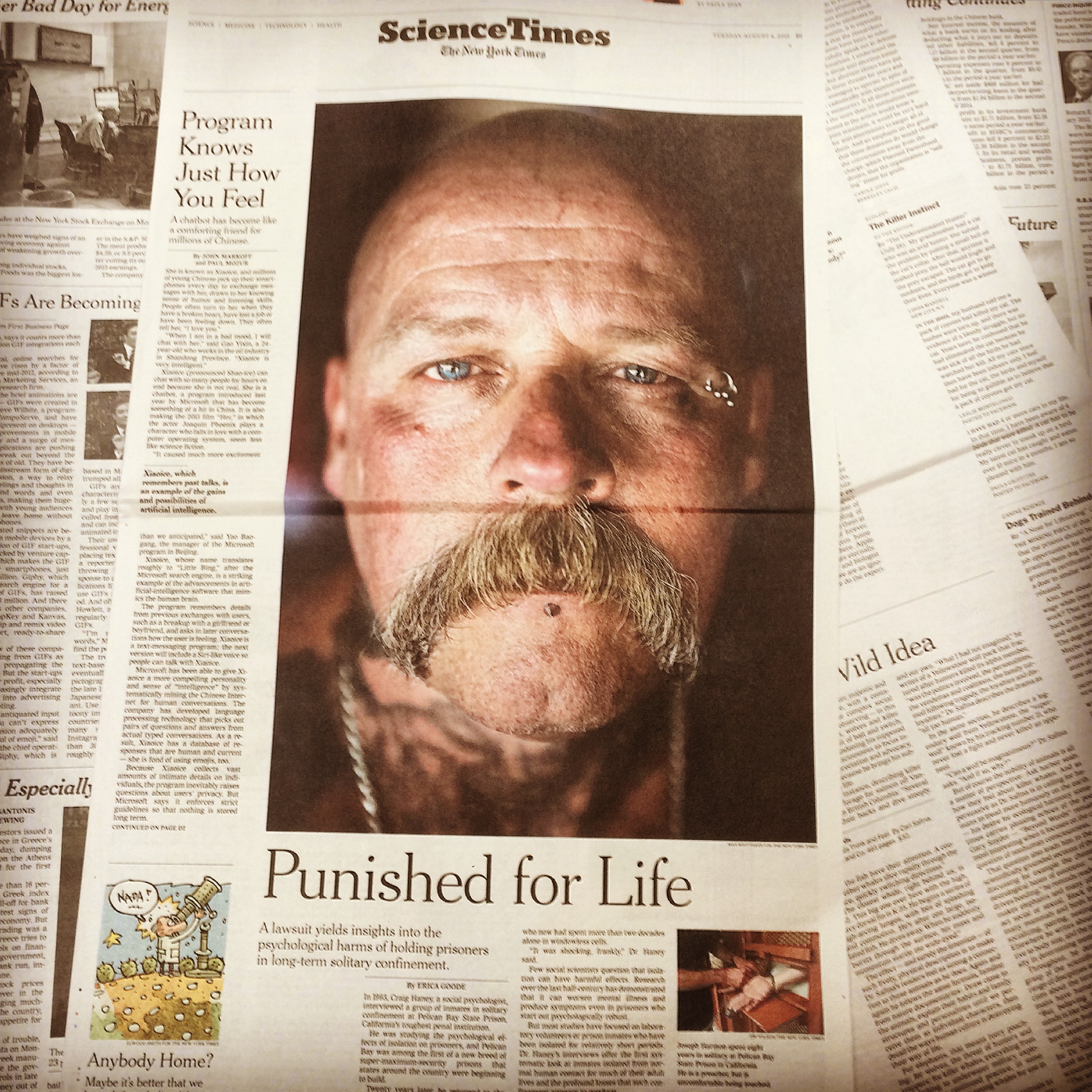Published first in CA Prison Focus, issue 60 (30 May 2020)
I am Paul Redd/Abbas, one of the original hunger strike representatives and signees of the historical document “The Agreement to End Hostilities.”
I find it an honor to be amongst this class of solid members who continue to refuse to compromise or/and debrief under any circumstances nor allow our minds to play tricks on us. It has been a continuous struggle fighting against the obstacles CDCR officials, IGI, ISU, SSU alike with their SNY’s now referred as designated program yard in attempt to derail positive progress.
Now we are up against an even more deadly beast called COVID-19 that data showing it is largely attacking and killing the Afrikan American and minority population that’s at a higher risk who suffering from hypertension, diabetes, cancer, sleep apnea, etc. Many of us like myself suffer from all these diseases listed as a high risk under COVID-19.
A lot of prisoners here including myself recently had our CPAP machine confiscated due to the COVID-19 virus. It’s being a lot of hype from some politicians lifers convicted of a violent offense should not be released under COVID-19.
Governor Newsom must be reminded of the longstanding undisputed data (record) elderly 60 & over serving a life sentence only has a 1% recidivism rate of returning. The older you are make us less likely to reoffend and less of a danger to public safety.
Here something overlooked or/and being ignored by CDCR/Board.
All of us released from the SHU by DRB under Step 4 and Step 5 were documented by DRB / Classification as inactive under a 12-months observation. Inactive is defined by CDCR officials as not being involved in criminal gang activities. Even when they later changed it to current activities. It still meant not involved in any current criminal gang activities. Their own language and definition make us a low-risk to moderate.
Let’s take it a step further at one time when some prisoners were completing the earlier step down programs. CDCR officials were handing out Rehabilitative Certificates stating folks completed their step down.
Those were certificates printed up by CDCR officials.
Next point: many of us under our sentences already got our max time served, which means, legally the board has no authority to hold us past our maximum term, which means: a period grossly disproportionate to his or her individual culpability for the commitment offense.
Case in point: the California Supreme Court in Danneberg has acknowledged:
“Section 3041(b) can not authorize such an inmate’s retention even for reasons of public safety beyond the constitutional maximum period of confinement.”
Turn to in Re Palmer II 33 CA, 5th 1199 (April 5, 2019), the court said prisoners may bring claims directly to the court through petitions for habeas corpus if they believe because of the particular circumstances of their crimes, that their confinements have become constitutionally excessive as a result. We can presently cite in Re William Palmer II 33 CA 5th 1199 as precedent in the pleadings.
There’s no time under COVID-19 to go through normal habeas corpus channels. Food for thought here under compassionate release provision section PC 1170(e)(a) read in part, the court shall have discretion to resentence or recall if the court finds that the facts described in subparagraph (a) and (b) exist.
The prisoner is terminally ill with an incurable condition caused by an illness or disease that would produce death within month as determined by a physician employed by CDCR.
Now the court said in order to ensure that such cases may be resolved fully and expeditiously we urge any party or counsel appealing under section 1170(e) to advise the appellate court at the earliest possible time of the nature of the issues on and date which a medical professional determined the defendant had no more than six months to live and to seek calendar preference (Cal. Rule of Court Rule 8.240).
My point for bringing this up, under this COVID-19, we can use to expedite hearings and releases for all of us meeting the high-risk of this deadly COVID-19 deadly no curable virus. Our fight continues. Each one, teach one.
Your brother in arms, Paul (Abbas)
